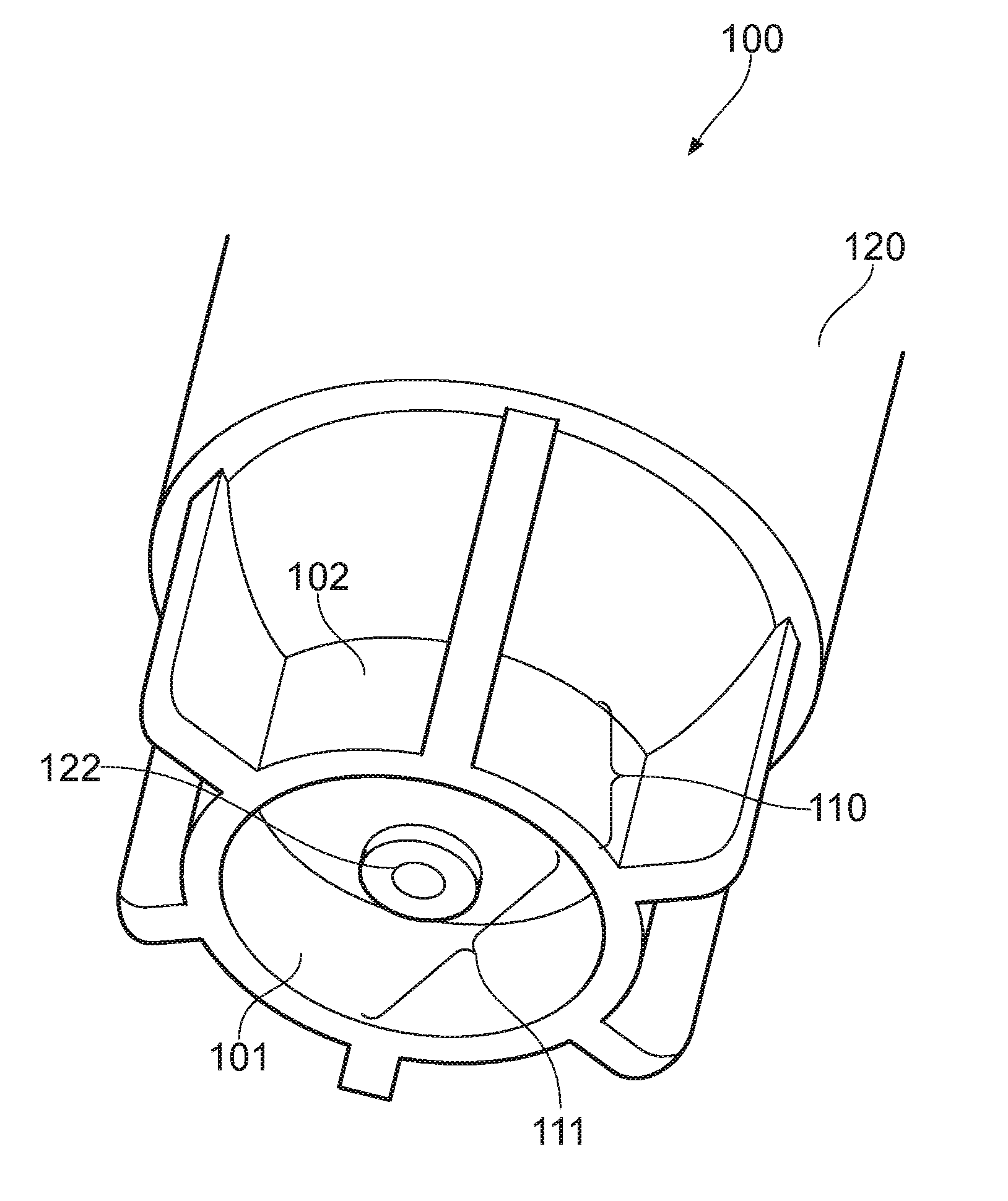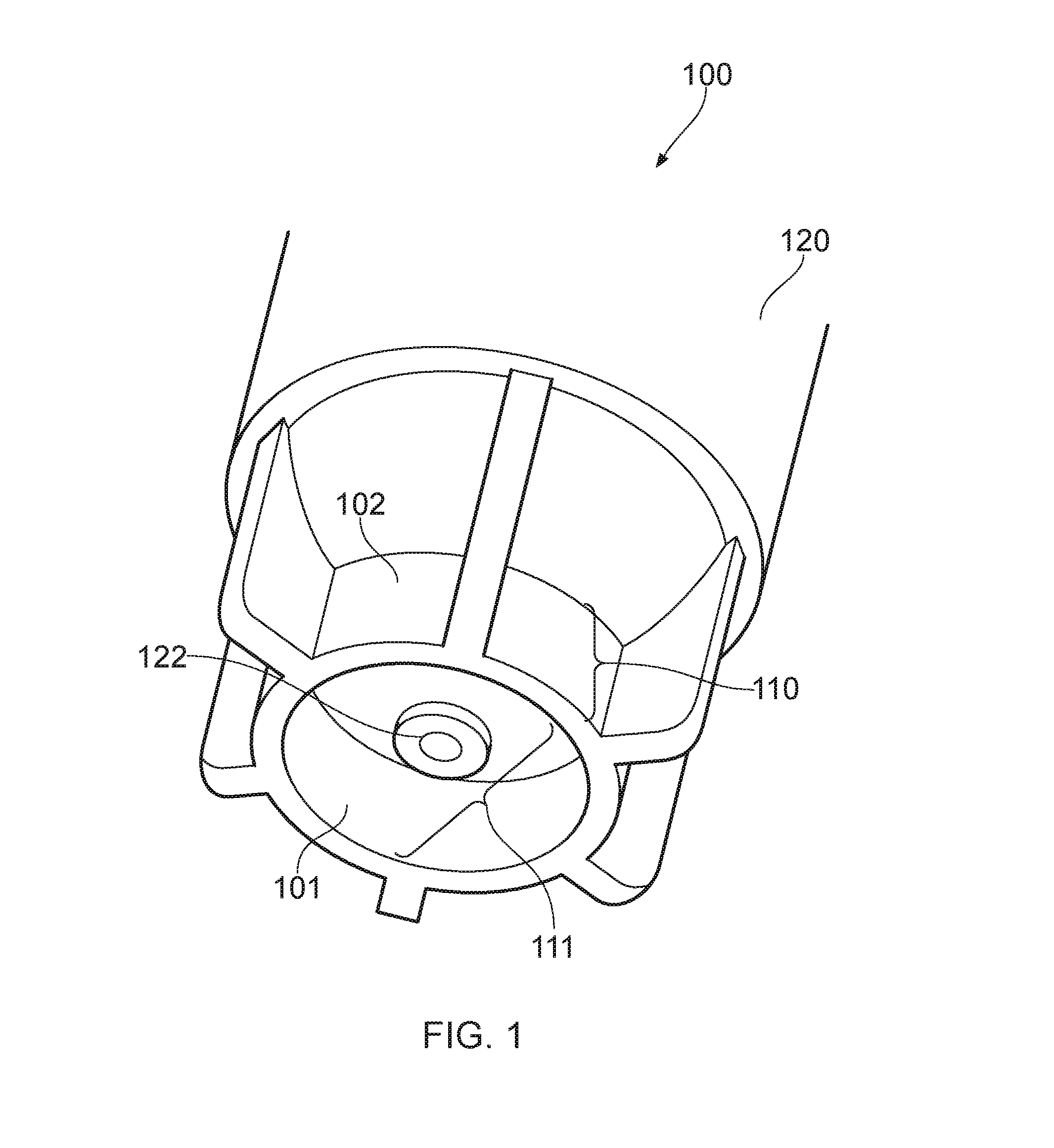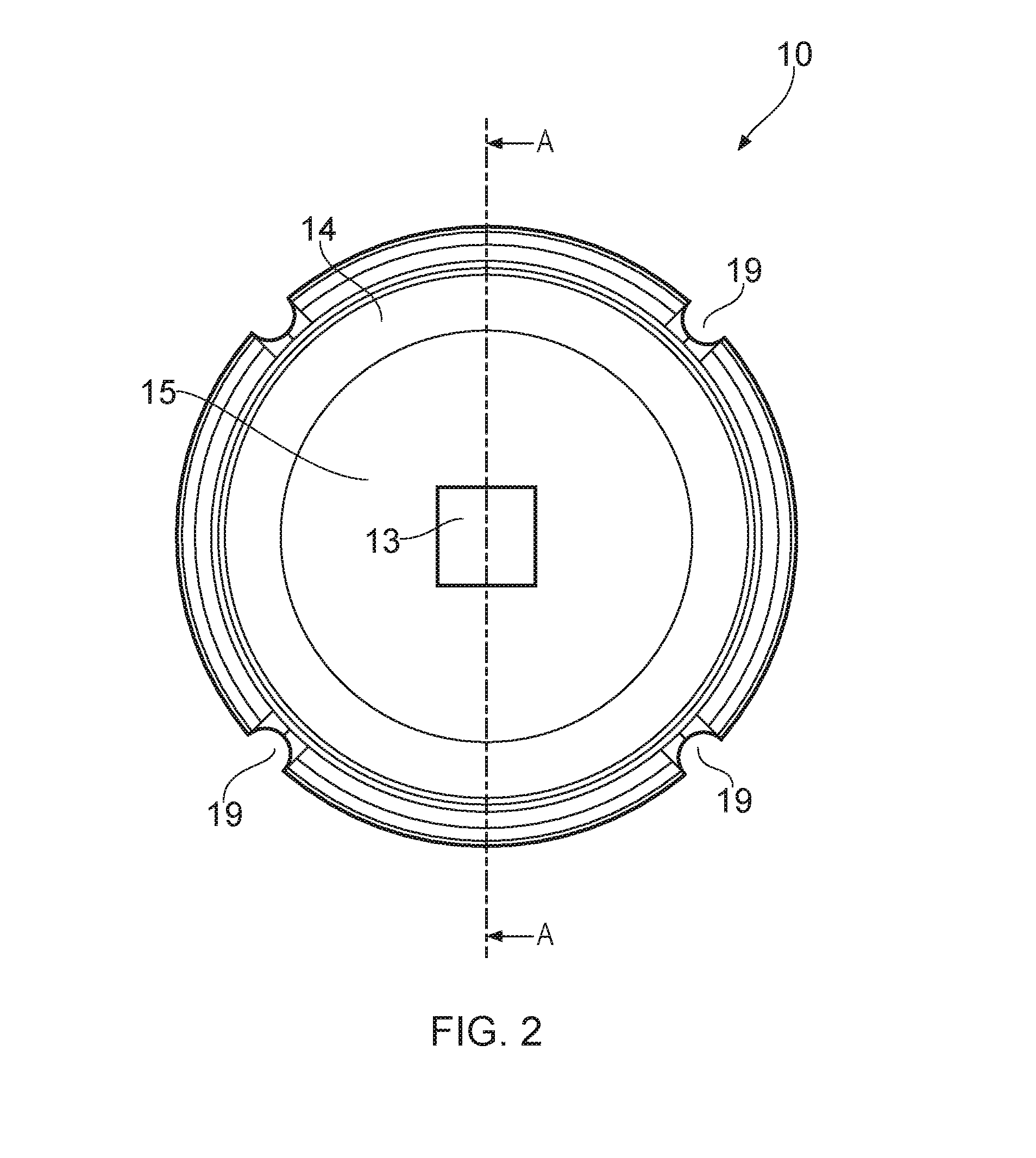RFID tag
- Summary
- Abstract
- Description
- Claims
- Application Information
AI Technical Summary
Benefits of technology
Problems solved by technology
Method used
Image
Examples
Embodiment Construction
[0085]FIG. 1 shows a part of a freestanding cryogenic vial 100 having a tubular base portion 110 and a sample cavity 120. The tubular base portion 110 forms a tubular base cavity 111 which is separate from the sample cavity 120.
[0086]In order to facilitate sample retrieval, the sample cavity has a rounded bottom 122 which protrudes into the cavity 111 of the tubular base portion 110. The tubular base portion 110 has an external surface 102 and an internal surface 101 which, along with the bottom 122 of the sample cavity, defines the size and shape of the tubular base cavity 111.
[0087]FIG. 2 shows a plan view of an RFID tag 10 for location inside the tubular base portion 110 of the freestanding cryogenic vial 100 of FIG. 1. FIG. 3 shows a cross-sectional view of the same RFID tag 10 taken along section A-A (shown in FIG. 2) and FIG. 4 shows a side view of the same RFID tag 10.
[0088]Referring to FIGS. 2-4, the RFID tag 10 includes an RFID chip 13, an antenna 14 connected to the chip 1...
PUM
| Property | Measurement | Unit |
|---|---|---|
| Temperature | aaaaa | aaaaa |
| Temperature coefficient of resistance | aaaaa | aaaaa |
| Structure | aaaaa | aaaaa |
Abstract
Description
Claims
Application Information
 Login to View More
Login to View More - R&D
- Intellectual Property
- Life Sciences
- Materials
- Tech Scout
- Unparalleled Data Quality
- Higher Quality Content
- 60% Fewer Hallucinations
Browse by: Latest US Patents, China's latest patents, Technical Efficacy Thesaurus, Application Domain, Technology Topic, Popular Technical Reports.
© 2025 PatSnap. All rights reserved.Legal|Privacy policy|Modern Slavery Act Transparency Statement|Sitemap|About US| Contact US: help@patsnap.com



